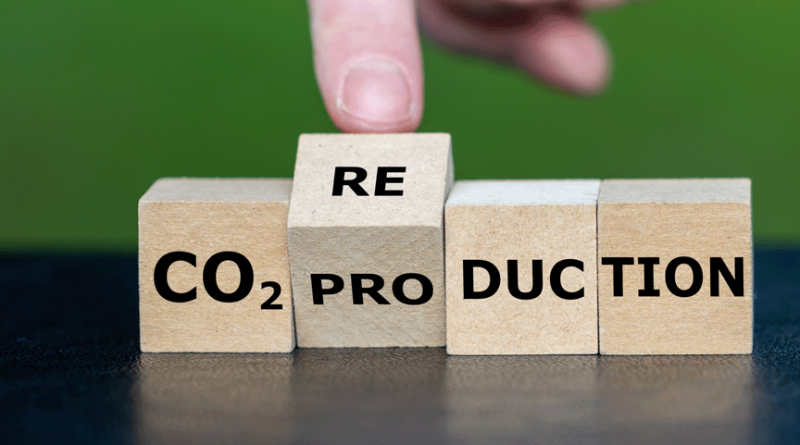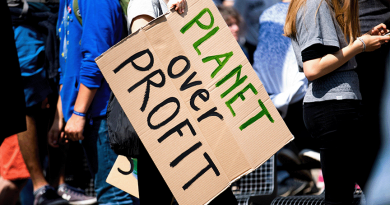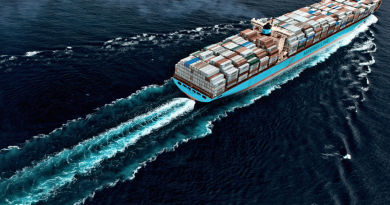Impact of CBAMs on the Indian metals sector
Nikhil Joshi is an Intern and Researcher at CII, and Geethanjali Nataraj an independent trade economist
Introduction
Carbon Border Adjustment Mechanism (CBAM) is among the potential policy measures to address the critical issue of carbon leakage across the world. A CBAM functions by imposing a levy on imported goods based on their carbon content, which is determined by evaluating the greenhouse gas emissions associated with the production process.
The goal is to harmonize the carbon costs between domestic and imported goods, thereby preventing carbon leakage. This approach ensures that imported goods face a comparable carbon cost to domestic goods, thereby reducing the competitive disadvantage faced by domestic industries operating under more stringent climate regulations.
The European Parliament on April 18, 2023, approved legislation to implement the CBAM as part of the EU’s Green Deal, which aims to reduce greenhouse gas emissions by 55 per cent by 2030.
Accordingly, commencing on October 1, 2023, enterprises that export steel and aluminium to the EU are obligated to establish robust monitoring systems that quantify the carbon intensity inherent in their production processes.
Additionally, they must furnish comprehensive reports detailing this measured carbon intensity. Although several other industries, such as cement, fertilizer, and electricity, are also encompassed by this regulation, their relevance to India’s exports to the EU is negligible.
Subsequently, starting from January 1, 2026, exporting companies operating within the EU jurisdiction will be mandated to provide CBAM certificates. These certificates serve as a mechanism to bridge the discrepancy between the carbon pricing paid in the country of production and the prevailing price of carbon allowances within the EU Emissions Trading Scheme.
However, there is criticism, particularly from developing countries like India that the CBAM is a trade-restrictive policy and India has also taken this matter to the WTO.
The UK is also considering moving along the same lines as the EU and the Government initiated a comprehensive consultation encompassing various interconnected policies, including CBAM, mandatory product standards (MPS) relating to embodied emissions, additional measures aimed at stimulating the demand for low-carbon products, and emissions reporting. The consultation period lasted 12 weeks and concluded in June 2023.
The UK is mulling to cover all sectors and products eventually under the proposed measures. It is also looking at emission measurement, CBAM price measurement, and the timing and manner of introduction of these measures.
One proposed option is to initially introduce the UK CBAM for a select number of sectors and then gradually expand its coverage in a phased approach.
As set out in the consultation, the UK Government intends to proceed to introduce embodied emissions reporting in 2025. This would be followed by a phased implementation of the CBAM in 2026 in conjunction with reforms to the UK ETS allocation of free allowances.
For the UK, any MPS would only be introduced following successful pilots in the late-2020s. The steel industry of the UK has also supported the move towards a CBAM, as it fears that if the UK is not aligned to the EU standards, non-EU steel, made commercially unviable in the EU due to the CBAM, will flood the UK markets at lower costs and adversely impact the domestic steel industry.
Other countries are also considering the EU CBAM as starting point for their efforts to adopt a direct Carbon price, such as Ukraine, Uruguay, and Taiwan, China.
Possible impacts
The steel industry is considered a sector that is difficult to decarbonize and currently accounts for around eight per cent of global emissions. According to the International Energy Agency (IEA), carbon emissions from this sector have risen in the past decade, primarily due to the growing demand and the energy required for steel production.
The introduction of potential policy measures to address carbon leakage is expected to present a substantial challenge to India’s metals sector as India is still coal-dependent for 55% of its power needs.
The policy measures to address carbon leakage that will be applied in the EU and will potentially be applied in the UK from the mid-2020s onwards; including a CBAM; MPS; and other demand-side measures to grow the market for low-carbon industrial products could have an adverse economic impact on India’s exports of energy-intensive products like steel, aluminium, cement, and fertilizers.
Indian manufacturers have expressed apprehensions regarding the imposition of a tax that could potentially lead to a significant tariff ranging from 20% to 35% on India’s exports of steel, aluminium, and cement.
Presently, these exports incur a duty of less than 3%. This tax measure could have a considerable impact, as approximately 27% of India’s total exports of steel, iron, and aluminium products, amounting to $8.2 billion, are destined for the European Union and India’s exports of articles of iron or steel to the United Kingdom amounted to US$359.1 million in 2022 (COMTRADE).
India’s overall export of CBAM commodities, which include iron and steel ($5,083.7 million), aluminium ($2,679.7 million), fertilisers ($0.64 million), and cement ($0.04 million), collectively constitute approximately 8 per cent of India’s total exports to the EU during the fiscal year 2022-23.
Over the preceding five-year period, the export of CBAM goods from India to the European Union has demonstrated a surge of 84 per cent, rising from $4.2 billion in the fiscal year 2018-19 to $7.8 billion in the fiscal year 2022-23.
The process of primary aluminium production is known for its high energy consumption, and in India, the utilization of coal-based power plants results in elevated greenhouse gas (GHG) intensity compared to their European counterparts.
During the initial phase of the CBAM, Indian exports to the EU are anticipated to remain steady, as domestic manufacturers adhere to stringent GHG reporting standards that fulfil the requirements until the end of 2025.
Nevertheless, once tariffs are enforced from 2026 onwards, Indian primary aluminium producers will be compelled to procure ETS certificates for emissions that surpass the allocated free allowance, subsequently leading to increased costs.
At present, there exists a disparity in emission intensity between Europe and India, which equates to potential additional costs of around $1500 per tonne. The resulting cost differential is expected to render Indian exports economically unfeasible in the European market, particularly when compared to competitors, who boast significantly lower emissions, as it would be very difficult for domestic manufacturers to achieve a 25% reduction in emissions intensity by 2030.
Another significant challenge for India is the absence of a domestic emissions trading system. This absence may make it difficult for Indian firms to show that their products are produced using low-carbon technology, leading to higher charges resulting in higher prices, reduced competitiveness, and decreased demand.
Several companies have already set targets to reduce emission intensity to levels more comparable to the current global average by the end of this decade.
To maintain competitiveness globally and mitigate the impact of the measures to address carbon leakage, it is important for India to prepare a comprehensive response including possible retaliatory measures
However, the adjustment process would require substantial investments and may pose challenges in terms of technological upgrades and operational changes. The impact of these potential policy measures to address carbon leakage will not be limited to steel and downstream steel products alone.
Upstream sectors, including iron ore, will also be affected. However, the emission intensity of iron ore is relatively low, suggesting that its inclusion under the potential policy measures to address carbon leakage should have minimal impact on trade flows.
The UK Government had sought inputs on how to address the trade concerns that are likely to arise with the introduction of the CBAM, such as the treatment of developing country exports, including those from India.
The concerns are that exempting high-carbon intensity products from developing countries could undermine net zero objectives but not doing so could undermine development objectives. Another concern is that post-imposition of the new regime, India is likely to become vulnerable to the dumping of steel items by various countries.
In the context of India’s journey towards climate transition, domestic companies have embraced renewable energy sources, either in the form of captive generation or through purchasing from external sources for two primary reasons: firstly, the superiority of renewable energy in terms of cost-effectiveness and reliability compared to traditional grid-based power; and secondly, the increasing pressure from Environment, Social, and Governance (ESG) investors who advocate for decarbonization measures.
The emergence of the CBAM in Europe, and potentially in other advanced economies such as the UK, presents a third influential factor that encourages a greater emphasis on renewable energy adoption by Indian firms.
In response to this, companies in India may identify specific production locations that offer more favourable conditions for procuring unrestricted and affordable renewable electricity. Such favourable conditions may arise due to either the leniency of distribution companies in their renewable energy policies or the physical accessibility to the Inter-State Transmission System.
This growing preference among exporters to procure renewable energy, therefore, has the potential to stimulate increased investments in renewable energy infrastructure within India.
Conclusion and way forward
To maintain competitiveness globally and mitigate the impact of the measures to address carbon leakage, it is important for India to prepare a comprehensive response including possible retaliatory measures as well as explore carve-outs for certain sectors/goods and MSMEs with the EU, and possibly the UK if it implements an CBAM.
These could include exemptions, or longer timeframes as well as technical assistance and financial support for compliance. India should also continue to oppose the discriminatory provisions of the CBAM.
If left unopposed, there exists a potential peril wherein the EU could progressively broaden the scope of its designated product range in the forthcoming years, a direction that their official stance appears to indicate.
Beyond the potential trade distortions, a concern surrounding the CBAM mechanism pertains to funding the transition towards the adoption of less carbon-intensive production methods, particularly within the realms of least developed and emerging economies.
Considering the EU’s leadership role in ambitious global climate targets, it is an opportune moment to remind the EU of its prior commitment to contribute $100 billion annually to facilitate developing economies in financing their climate-focused initiatives.
Indian companies can adopt various strategies to minimize the impact of the potential policy measures. One approach is to invest in renewable energy sources and energy-efficient technologies to decrease carbon emissions, consequently reducing the tax burden under the CBAM.
Another strategy involves optimizing supply chain processes to lower the carbon footprint of their products. Additionally, India is laying the groundwork for establishing a carbon market. The Ministry of Power released a draft of the Carbon Credits Trading Scheme (CCTS) on March 27, 2023, which outlines the institutional framework and operational mechanisms that will govern the future carbon credit market in India.
The Indian government is seized of the matter and has termed CBAM ‘unjustifiable discrimination’ on developing nations and that it is being ‘selectively applied’ to sectors that are in foreign trade in turn impacting their competitiveness.
While considering retaliatory measures against similar measures by the EU, India had pitched for mutual recognition of its carbon certificates as well as recognition of India’s proposed Carbon Credit Trading System. India is also looking at promoting carbon auditors.
Moreover, India has sought special treatment for its MSMEs as almost half of such companies will be affected by CBAM. The Indian steel industry, among the CBAM-impacted sectors, is taking initiatives to switch to being renewable energy-powered and to green manufacturing processes.
The EU, which deems CBAM as not protectionist but a measure to fight climate change, has shown a willingness to collaborate with India to reduce the ‘administrative burden’ on businesses for CBAM compliance.
India must therefore implement a carbon pricing mechanism and advance the development of low-carbon technologies. These measures will assist Indian businesses in complying with potential policy measures to address carbon leakage and reduce the carbon intensity of their products.
Furthermore, India should re-evaluate its export strategy and explore alternative markets where its products can remain competitive if the potential policy measures to address carbon leakage are implemented.
The views are personal and cannot be attributed to the organization to which the authors belong.




